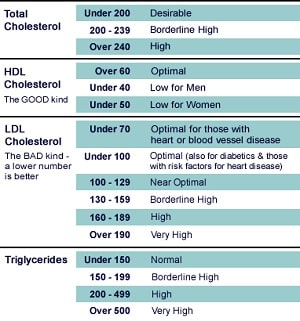Cardiovascular Disease - Prevention
A healthy heart takes a well-rounded approach. It involves the right lifestyle choices…not just one, but many. It includes what you do to yourself both inside and out. Though it may sound hard, it’s really not. The good news is that once you make the decision to live a heart healthy life, you soon discover that the benefits are endless. And the only thing you regret is that you didn’t do it sooner.
Exercise plays such a significant role in maintaining a healthy heart that lack of it places both men and women at greater peril for heart disease than most other risk factors! Along with eating right, which includes consuming more fiber and less fat, sodium and calories, these two lifestyle choices alone put you on the right road toward optimum heart health. In addition, the decision to stop smoking, which accounts for 20% of all deaths from heart disease and is the major cause of coronary artery disease, cuts your risk in half within the first year!
Sometimes the numbers say it all. According to the Centers for Disease Control and Prevention, studies have determined that lowering high blood cholesterol and high blood pressure can reduce the risk of developing heart disease. And for those with heart disease, lowering these risk factors lessen the possibility of having a heart attack, needing angioplasty, stent implants, heart bypass surgery or death.
A heart healthy regimen will improve blood pressure and cholesterol readings, but monitoring these two vital indicators is essential. Regular visits to your primary care physician will ensure proper oversight.
High Blood Pressure
More than 50 million people in the United States have high blood pressure and nearly 30 percent don’t even know it. According to the American Heart Association, it affects one out of every three Americans. High blood pressure is an elevation in the force of blood pushing against the walls of the arteries. It is a major risk factor for heart attack, heart failure and stroke.
Blood pressure is expressed as a ratio of systolic pressure over diastolic pressure. Ideal blood pressure for adults is considered to be below 120 / 80. Blood pressure above 140 / 90 is considered high for adults; between 120–139 over 80–89 is considered borderline.
Periodic blood pressure checks (painlessly done with a blood pressure cuff in less than 3 minutes) can help monitor your blood pressure and identify this crucial risk factor. While medication can control high blood pressure, lifestyle changes are your first defense: eat a healthful diet; avoid smoking and excessive drinking; get regular exercise; pursue weight loss when indicated; and focus on relaxation to assist with emotional factors that play a significant part in high blood pressure.
Cholesterol
This fat-like substance (lipid) is present in everyone’s body. About 80 percent of cholesterol is manufactured in the liver and the remaining 20 percent is consumed in cholesterol-rich foods such as meat, eggs or full fat dairy products. While cholesterol is known to contribute to coronary artery disease, it is still vital to good health. The body uses cholesterol to assist in the manufacture of hormones; break down of carbohydrates and proteins; formation of the protective coating around nerves; building of cell walls and production of bile.
Cholesterol is carried through the bloodstream by lipoproteins. The high-density lipoproteins (HDL), known as “good cholesterol,” transports cholesterol away from arteries and are protective. The low-density lipoproteins, known as “bad cholesterol,” can penetrate the arterial wall and deposit cholesterol within the artery, thus contributing to heart disease.
The third substance measured in a cholesterol screening is your triglycerides. Triglycerides are the most common type of fat found in your blood and are a major source of energy. When you eat, any extra calories not needed at that time turn into triglycerides which are stored in fat cells for later use. If you regularly eat more calories than you burn, you may have high triglycerides. In normal amounts, triglycerides are important to good health. When triglyceride levels are high, it can increase your risk for heart disease.
Today’s cholesterol management tends to focus on reducing the LDLs, while increasing the HDLs. Desirable levels vary based upon your individual circumstances (note chart below). Your cholesterol count is easily found through a simple blood test. If your cholesterol levels are higher than ideal, speak to your doctor about changes in diet and lifestyle that can help improve your heart’s health.
Cholesterol by the Numbers

